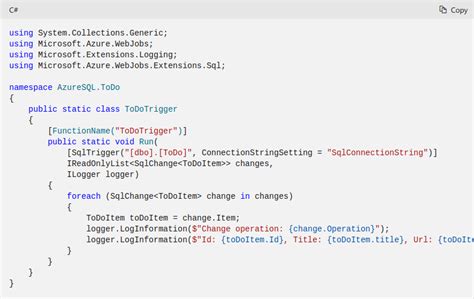Here is a draft article in your request:
Trigger function with each new minute with Websocket data for trading Ethereum
As a participant or market researcher, it is essential to stay ahead of the market and have real -time access to commercial data. An effective way to achieve this is to use Websockets, which provide bidirectional communication between a client (for example, their trading platform) and a server (for example, Binance). In this article, we will focus on the creation of a trigger function with each new minute with WebSocket data for Ethereum negotiation.
The problem
To calculate the total value of all negotiations on each side (market manufacturer/borrower), you need to analyze the commercial data transmitted by the flow of future aggregate negotiations from Binance. The problem is in efficient data processing and analysis this large volume of data, especially when dealing with high frequency negotiation.
SOLUTION: Implementing a trigger function of Websocket
Here is an example of implementation using node.js, express.js and Websockets:
`JavaScript
CONST EXPRESS = Requires (‘Express’);
Const app = Express ();
Const Http = Require (‘http’). CREATESERVER (APP);
Consta io = Require (‘socket.io’) (http);
// Configure WebSocket connections
io.on (‘connection’, (socket) => {
console.log (new established connection);
// assigns an exclusive ID to each client
Socket.id = Math.Random (). Toasting (36) .substr (2, 9);
// Define the frequency of updates
CONST UPDATEFREQUENCY = 60000; // 60 seconds
// Works to update commercial data every minute
Updatetradated function () {
// assumes a sample of WebSocket message structure
Socket.on (‘trade’, (trade) => {
// Analyze and process commercial data here
console.log (commerce received: $ {trade.id} ($ {trade.side}) - Value: $ {trade.Value});
// Update your negotiation logic here, for example, calculate the total value
// trigger function for each side of the trade
if (trade.side === ‘Market’) {
TriggemarketSide (trade);
} else if (trade.side === ‘taker’) {
Triggertakerside (commerce);
}
});
// Schedule the update every minute
Setinterval (() => {
Updatetradated ();
}, updatefrequency);
}
// Works to trigger a side of trade based on market condition or borrower
Gatperside (lateral) function {
if (side === ‘market’) {
console.log (triggering trade on the market side: $ {side});
} else if (side === ‘taker’) {
console.log (trigering taker-side-side trade: $ {side});
}
}
// Start the server
http.listen (3000, () => {
console.log (‘server listening to port 3000’);
});
});
`
How it works

- We created an Express.js app and started a webSocket server.
- When a new connection is established, we assign an exclusive ID to each client.
- We define the frequency of updates (in this case, every minute) and scheduled the
updateredata 'function usingSetinterval.
- In theupdateredata function:
* We hear the ‘Trade’ messages in the socket connection.
* If a negotiation is received, we analyze and process.
* We take functions for each side of trade (market or borrower) based on the condition.
- We scheduled the next update using
Setinterval.
Example of case use
To test this implementation, you can use the WebSocket Client Like Websocket.io to simulate trade date. When a new connection is established, you will receive commercial messages every minute. You can trigger functions for each side of trade based on market or borrower conditions.
Remember to replace the `updateredata ‘function with your actual negotiation logic and adjust the frequency of updates according to your requirements.
Conclusion
By using Websockets and a trigger function, you can efficiently process and analyze the data of Ethereum Trade every minute.


